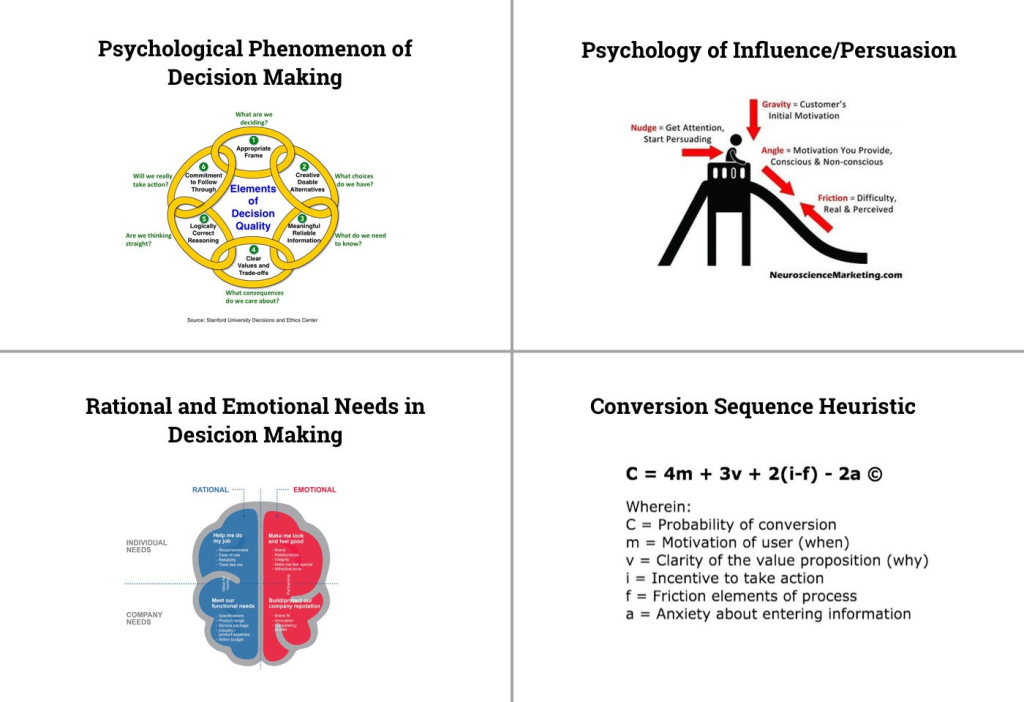
Understanding user behavior is a critical aspect of optimizing conversions on a website. By exploring the psychology of conversions, businesses can gain valuable insights into the cognitive processes, motivations, and decision-making factors that impact users. Here are the key components to consider when understanding user behavior:
- Cognitive Processes: Users’ cognitive processes, such as perception, attention, memory, and decision-making, have a significant influence on conversions. Understanding how users perceive information, what captures their attention, how they remember and recall details, and how they make decisions can inform website design and content strategies.
- Attention and Focus: Users have limited attention spans, so capturing and maintaining their attention is vital for conversions. Employing compelling headlines, visual cues, and prominent calls-to-action (CTAs) can help direct and sustain users’ focus on key conversion elements.
- Decision-Making Biases: Users are susceptible to various cognitive biases that affect their decision-making. Biases like familiarity bias, social proof, scarcity effect, and loss aversion can be leveraged to increase conversions. Aligning website elements with these biases enables businesses to tap into users’ decision-making tendencies.
- Emotional Triggers: Emotions play a significant role in user behavior. By evoking specific emotions, such as happiness, excitement, trust, or fear, businesses can establish a connection with users and influence their decision to convert. Emotional triggers can be incorporated into website design, imagery, copywriting, and storytelling.
- Trust and Credibility: Users are more likely to convert on websites they trust. Building trust through elements like professional design, security assurances, customer testimonials, and transparent policies enhances credibility, reduces user anxiety, and increases conversions.
- User Journey and Flow: Mapping the user journey and understanding how users navigate through a website provides insights into potential barriers or friction points that hinder conversions. Optimizing the user flow by reducing distractions, simplifying navigation, and providing clear pathways can improve the conversion process.
- Social Influence: Users are influenced by the actions and opinions of others. Incorporating social proof, such as user reviews, testimonials, and social media shares, enhances credibility and fosters a sense of community, positively impacting conversions.
- Cognitive Load: Users have limited cognitive capacity, and websites that overwhelm them with excessive information or complex processes can lead to decision paralysis or abandonment. Optimizing the website’s design, content, and functionality to reduce cognitive load and simplify the conversion process can improve conversions.
- Persuasive Copywriting: Effective copywriting techniques, such as storytelling, framing, persuasive language, and benefit-driven messaging, tap into users’ motivations and desires, compelling them to take the desired conversion action.
- User Testing and Feedback: Conducting user testing, surveys, and collecting feedback provides valuable insights into user preferences, pain points, and areas of improvement. Incorporating user feedback into optimization strategies helps align the website with user needs and preferences, ultimately increasing conversions.
In conclusion, understanding user behavior and the psychology of conversions is crucial for optimizing websites and driving higher conversion rates. By leveraging insights from cognitive processes, attention, decision-making biases, emotions, trust, and social influence, businesses can create a user experience that aligns with users’ needs, motivations, and decision-making factors, ultimately increasing conversions.






Leave a Reply
You must be logged in to post a comment.